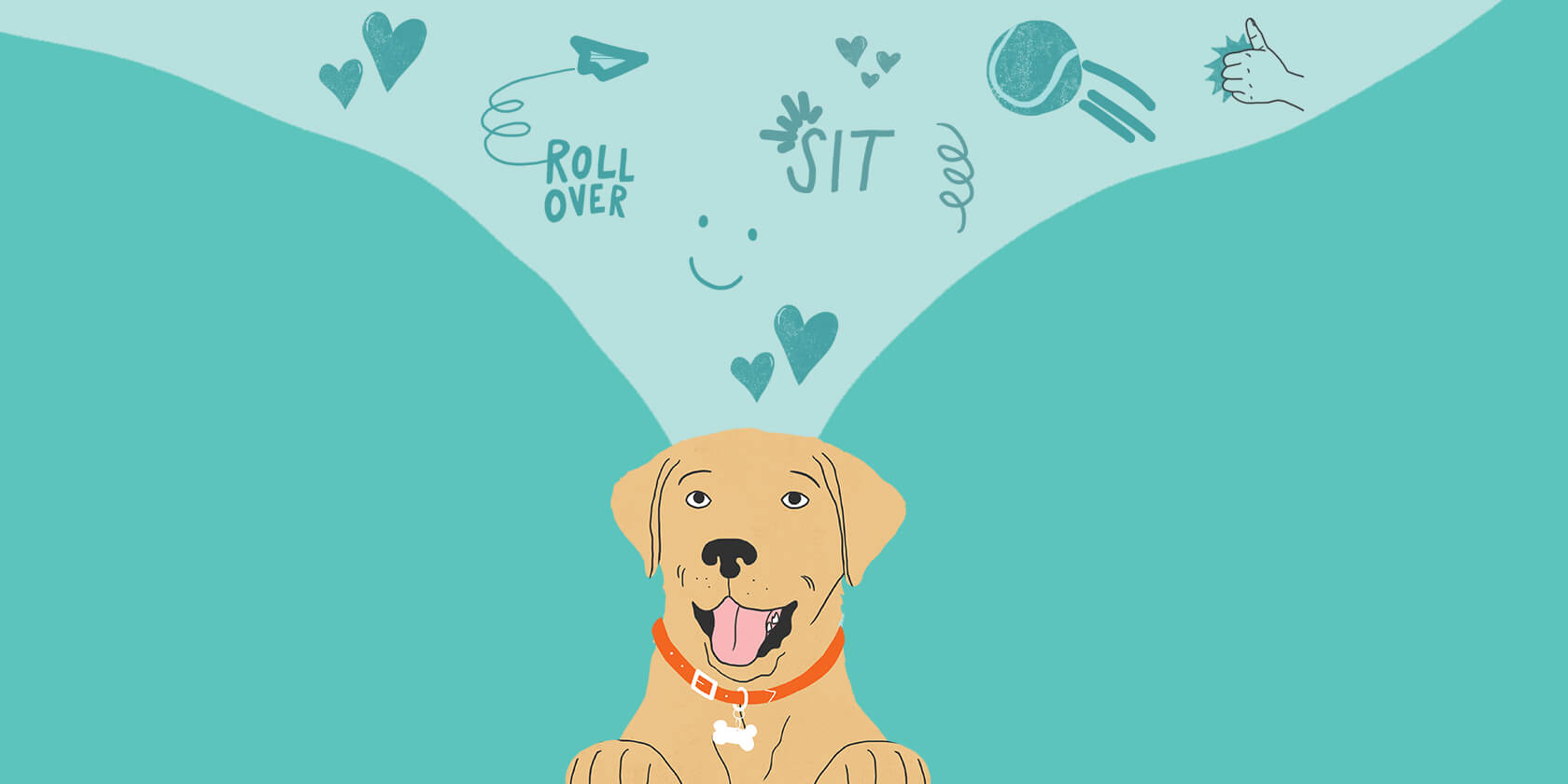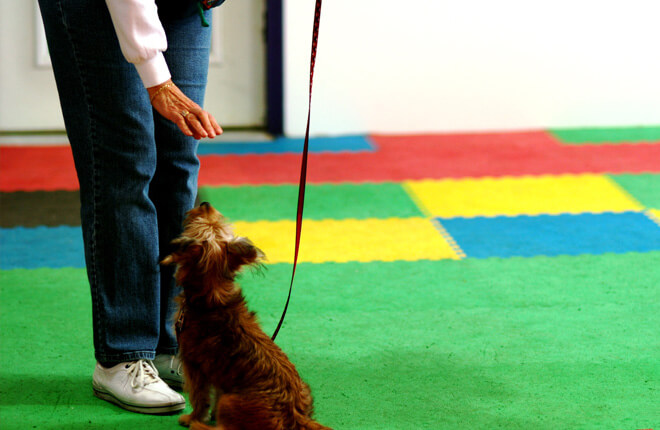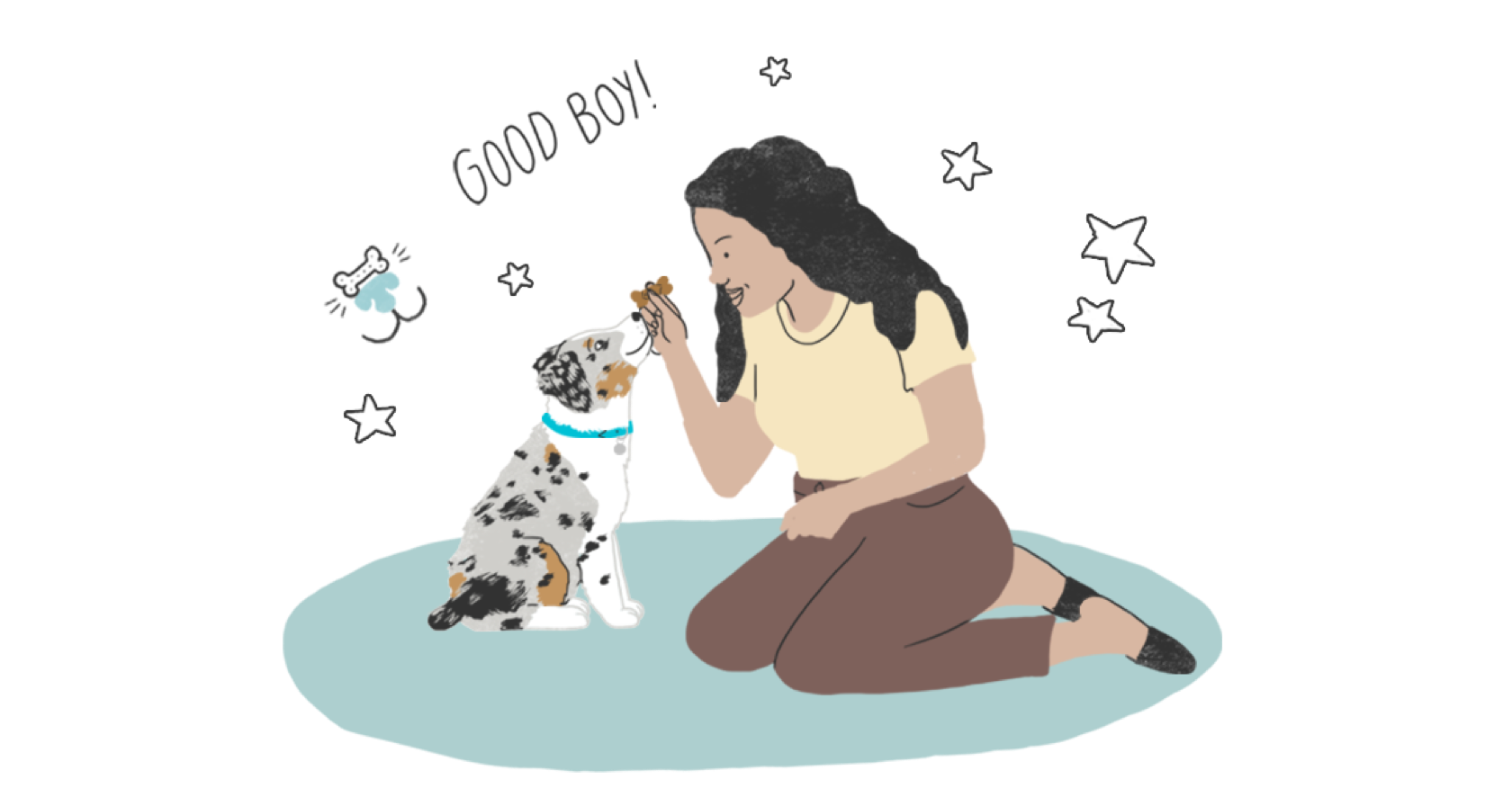Are you ready to start training your dog? Signing up for a dog training class and having a certified dog training professional to help you along the way means you and your dog will get the feedback and support you need to reach your training goals faster. There are many dog training class options to pick from, depending on what you and your dog need.
It's important to confirm with a potential dog trainer that all dog training strategies utilize positive reinforcement. Negative reinforcement should never be used for dog training or behavioral modification. Your veterinarian can also be a resource for questions and recommendations regarding dog training and finding a trainer.
What’s the Difference Between Private and Group Dog Training Classes?
Private dog training classes are one-on-one sessions with a dog trainer where you and your dog are the only students. These private classes might be done in your home or at a dog training facility if your trainer has a physical business location. Private dog training classes allow for a lot of flexibility in scheduling. They don’t follow a set curriculum — instead, your dog trainer will create a personalized training plan for you and your dog, based on the things you want to train.

Private dog training classes are ideal for:
- Busy schedules that make attending a regular weekly class difficult
- Getting the entire family involved in your dog’s training
- Specific behaviors you’d like addressed beyond basic obedience, especially those that happen only in the home (such as counter surfing or door dashing)
- Complex behavior issues such as resource guarding, aggression, or fear-based behavior
Group dog training classes are regularly scheduled training sessions with multiple dogs and their owners, with one dog training instructor per class. In some classes, there will be assistant trainers who assist the head trainer and help students.
Group dog training classes follow a set curriculum based on the specific type and level of the dog training class.
The dog trainer will usually work through a few different cues each week. First, they’ll explain the behavior, then demonstrate the behavior (sometimes with their own dog, but more often with a student’s dog), have the students all practice the behavior, and give feedback. At the end of each weekly class, you’ll receive some homework to practice before the next group training class.
Group dog training classes are great for:
- Learning obedience cues
- Dogs that need training practice around distractions
- Getting involved in dog sports
- Puppy training and socialization
Different Types of Dog Training Classes (and What You’ll Learn)
Group dog training classes are for more than just learning the basics. While many dog owners sign up for puppy class or basic obedience 101, there’s more you can do in a group dog training class to expand your dog’s skills and have lots of fun.
Here are a few examples of the different types of dog training classes:
- Puppy socialization and play groups. These classes focus on helping your puppy learn basic manners and how to interact with other dogs politely.
- Intermediate and advanced obedience. These classes take obedience to the next level, increasing the difficulty of the basic cues, and adding in more complex behaviors with higher distractions, such as heel, emergency drop, or retrieve. These classes help dog owners get ready for dog sports like Rally Obedience or competition obedience and are a great way to keep your dog’s brain sharp and strengthen your bond.
- AKC Canine Good Citizen training and certification. If you’d like to explore therapy dog work or want your dog to be a well-behaved canine ambassador, consider a CGC class. Your dog will practice real-life training scenarios and, at the end of the course, be tested on their basic manners, impulse control, and sociability with people and other dogs.
- Growly dog or reactive rover. These classes are specifically for dogs that growl, bark, or lunge when they see other dogs or people while on a leash. These classes have limited attendees and are carefully structured to help these dogs and their owners work on behavior modification in a safe and controlled environment.
- Dog sports. If you want to harness your dog’s natural instincts, sign up for a dog sport class! Depending on what your dog loves to do, there is a dog sport for them.
Where Can You Take Dog Training Classes?
Many large pet stores offer dog training classes in their stores and have a team of on-staff dog trainers. You can often find facilities dedicated solely to dog training classes with multiple dog trainers as a part of their team. For self-employed dog trainers that don’t operate out of a brick-and-mortar location, they might use a local park or community center to hold group training classes.
When Should You Start Dog Training Classes?
It’s never too early or too late to start training your dog! If you’ve brought a new puppy or adopted dog home, getting started in a group dog training class is a great way to build your relationship and practice good habits from the get-go. Even if you’ve had your dog for years, signing up for a training class is a great activity to do together, and is a wonderful boredom buster and enrichment experience.
ZPC-00895R1



